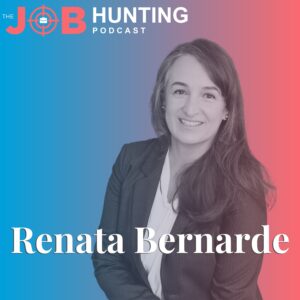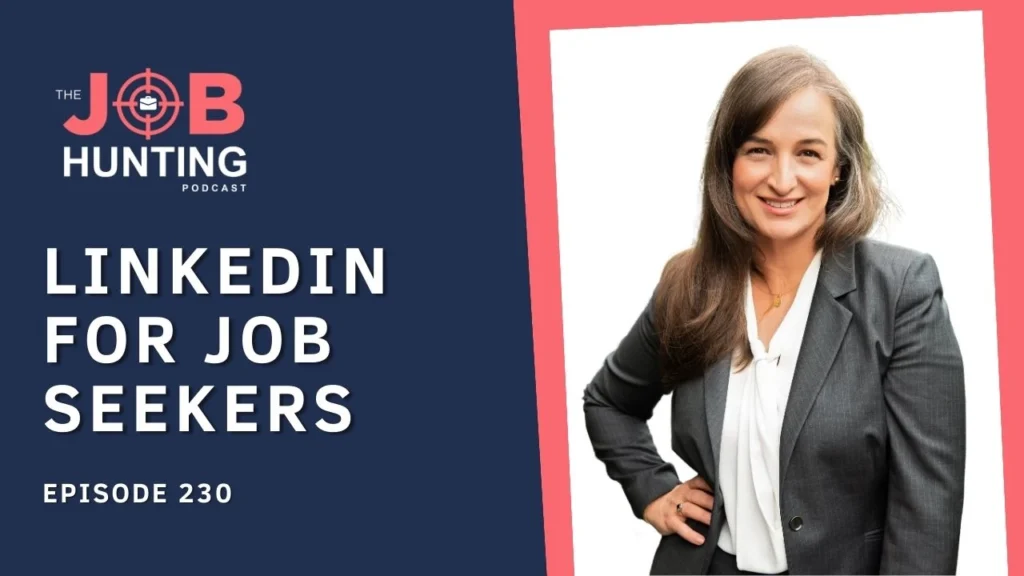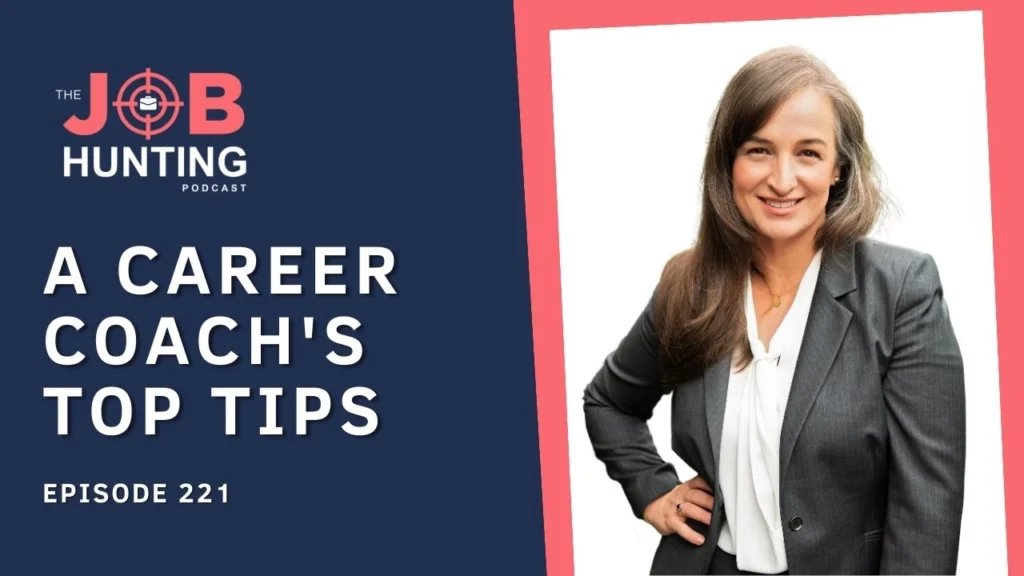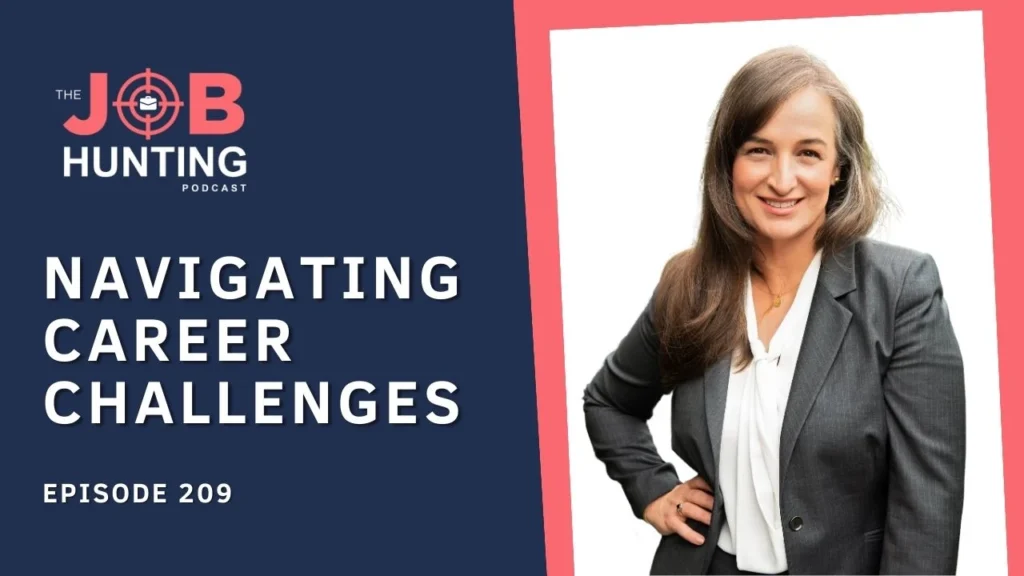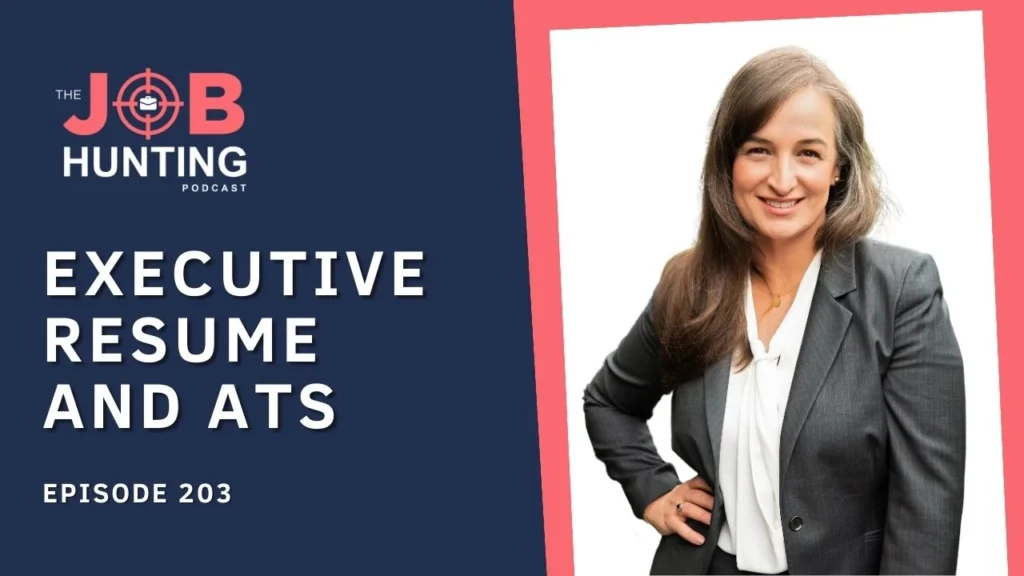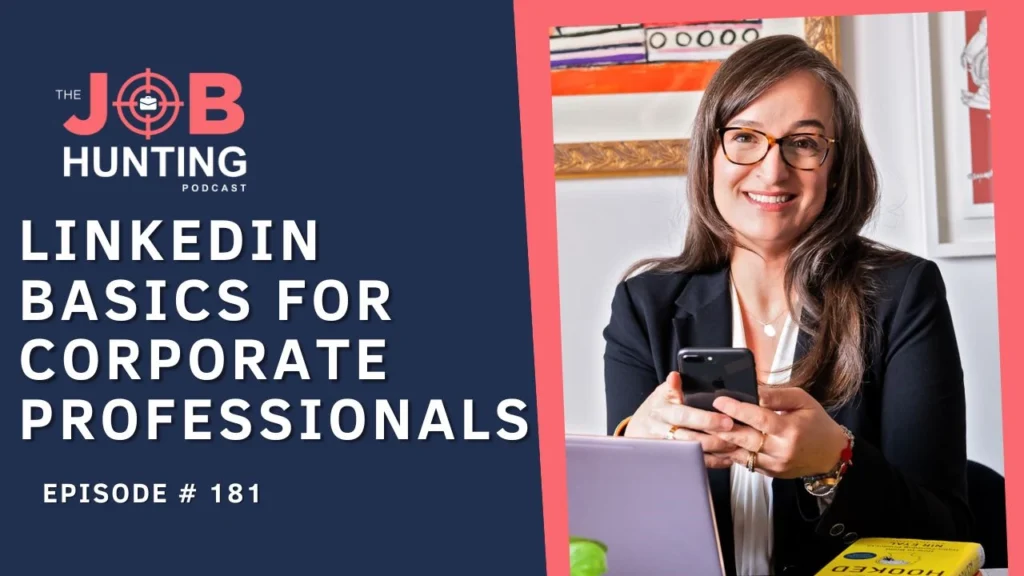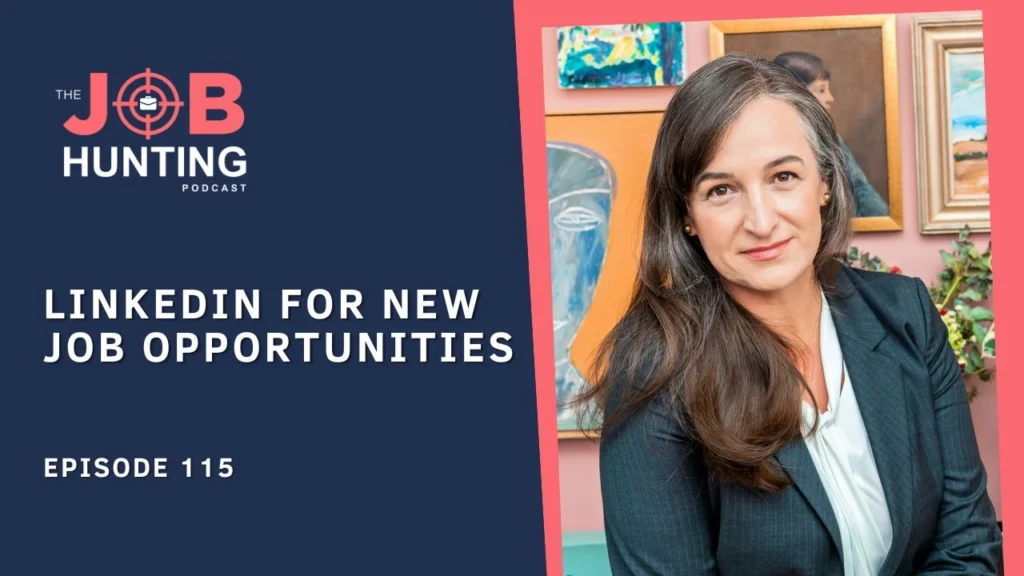Hello listeners. And welcome to another episode of the job hunting podcast. Today, we’re diving into some vital tips for job applications. Those are tips that I have been talking about for a long time. If you’re a diehard fan of the job hunting podcast, you may have listened to some of them, but they are. Going to be discussed today by me in a very different way. We’re going to blend traditional advice that you may have listened to in the past with modern tools like AI and other powerful tools like LinkedIn, there’s so much that LinkedIn can offer now. So if you’re ready to take your job hunting to the next level, let’s jump in.
Navigating the job application process can be so overwhelming. And I have compiled these seven tips based on my own personal experience as a former corporate professional. So to give you a bit of background, you know, I was made redundant back in from an quite senior role in a university here in Australia. And I decided that was it. I was in my late forties and it was probably a decade earlier than I thought I would be done with. Looking for new roles, but I was so energized to start my own business. And I started with consulting. I knew I wanted to transition into career coaching. I started the job hunting podcast in 2019 in October. So we’re almost four years old. And I then during the pandemic completely transitioned into career coach, and it has been the best thing that I have done. It could have gone all wrong, but it didn’t thank goodness. And I’m very happy. But I first wrote these tips back in 2011. If you listened to the previous episode, I mentioned that I felt a no, the blog on WordPress that I had completely forgotten about. And I decided to capture some of these ideas, recycle them and update them to 2023. When we’re recording this episode. You will see that these tips are classic. They’re basic, but think of them as a good list so that when you’re doing job applications, you can tick tick, tick. If you’ve done them good for you, but maybe you have forgotten along the way. Some of these steps and because I’ve noticed that these mistakes are very common with my new clients, people that will consultations with me, people that book LinkedIn audits with me. I felt like, oh, wow. We still need to talk about them. I have updated them, as I said, by integrating real life scenarios to make it super clear for you. That tech tools like chat GPT and other AI tools and the web and LinkedIn and coaching can provide different insights depending on how you feel. You are performing with each of these seven tips. So I’m going to give some recommendations and guidance to enhance your job application, and of course help you advance your career and get your next awesome job.
So tip number one. Stick to the guidelines. Oh dear. Oh, dear. Sticking to the instructions of the job application is so important. When an application process specifies a method or a format, you have to adhere to it, your resume or a cover letter could be overlooked simply because you didn’t follow directions. Remember, it’s not about how you want to present your information.
It’s about how the employer wants to receive it. It is very tempting to use unconventional tactics. Like I said, But more often than not, you will end up either annoying the employer if it’s a small business and they don’t use ATS. The applicant tracking system. Or you are not going to go through the ATS and be shortlisted at the end of software sort of assessment of your application. Okay. So let’s talk about tech and AI tools that are used for job applications that really require you to stick to the guidelines. So. AI driven recruitment process require the candidate you to out of fill your details. Based on the guidelines that they have provided for you. You, if you have been applying for jobs lately, you may have seen this happen. They ensure that you submit the information in the format that is desired by the employer. The employer has invested quite a lot of money. Quite a lot of time in developing these ATS systems and slightly tailored. They may, even if they bought it off the shelf, they may have slightly tailored it to their needs. So. You know, if you, could please go online and look at an organization like Pymetrics, there will be a link in the episode, show notes. It’s P Y M E T R I C S. So if you apply for a job with a company that has invested in Pymetrics as part of their job application process, you will receive an invitation to use the platform.
And then it will ask you a question. And it’s an application that taylors is your what you submit based on the company guidelines, ensuring that you mid specific format requirements. So it’s important to be familiar with how these tools work and save your answers so that when you’re typing them in these boxes, that you save them in a word document or a Google doc and recycle them in future job applications. Okay. So this is really important to save you time and to make your job application and your job hunting more efficient. And then looking at LinkedIn. If you’ve been applying for jobs using LinkedIn, you may have noticed that there is an easy apply feature that often streamlines the application process by using data from your LinkedIn profile to fit the employer stamp plates. Now, this is why one of the reasons there are many reasons why, but this is one of the reasons why it’s important to have a great profile for job seeking. Now I am working on a short course about LinkedIn for job seekers. This is going to be so important because although there are lots of LinkedIn little courses out there and some of them are pretty good. Many of them are not really designed for job hunting. They’re designed for business owners like myself. They’re designed for people that want to build their profile and be thought leaders in their industry. That’s very different from a profile for job seeking job seeking profiles. They need to be designed in such a way that makes this easy apply feature on LinkedIn, really streamlined.
That also makes you easy to find for recruiters that have the recruitment platform that LinkedIn Salesforce recruitment agencies, and for HR departments. So, you know, if there is an applicant and he sees a job posting on LinkedIn with the quick apply button, he clicks it. And LinkedIn will alter populate the application, using the details from his profile. And this happens also with the ATS system. If you’ve have been applying, you know, this. So. This is the thing that if we go a step back we need to also remember how to do a resume in a format that similarly to how your profile on LinkedIn will make it easier for the easy apply button to populate the template, same happens with your resume and some ATS softwares used by employers. I have a client he’s now working with me for three months, but he started off with one-on-one consultations. And one of the first things that we did together in one, of those consultations was to update his resume in instantly. He saw a huge difference and being shortlisted for jobs. Now he had been applying for roles. Prior to redoing his resume in a consultation with me. And he wasn’t getting through. And as soon as he worked with me on making the resume ATS compliant. Through one hour consultation, he got all of the sort of following interviews. Now we’re working together because he’s not getting interviews. Well, he’s getting interviews, but he hasn’t really converted from interviews to. getting an offer. And we’re going to work together on that. And three months is more than enough. So that will be something to consider as well. And that’s what a coach can do. So a career coach can guide you on the importance of that adherence to guidelines, share insights on how different companies prioritize this and how different recruiters work depending on what level of seniority you are in the corporate world. You know, I can, if it was with me, I would be able to sort of give you guidance on how different recruiters work. And, you know, remind my clients of mine about. The fact that the deviated from guidelines that I’ve given them, that the recruiters have given them, and then they didn’t go through, I have a client. That has happened to her like last week. So she applied and got almost to, you know, a job offer so much so that we draft it together and message on LinkedIn to the employer, asking for feedback as to why she didn’t get the job. And the employer wrote like an essay. It was explaining that, you know, it was a really a close call and she wants to expand her team and it will keep her in mind. There was no feedback really to give, except, you know, the other candidate had a little bit more of a specific experience that she was hoping for this person to hit the ground running. But other than that, she interviewed really well, yada yada. So why am I saying this? Because after this application, my client went and applied for two other jobs and didn’t even get an interview. And she had forgotten some of the guidelines that I had given her as to how to apply for jobs that convert. And we’re going back to basics. So that’s what coaches do. They’re like, okay, you have forgotten all these steps. and all the patterns of success. That you’ve learned from this amazing job application. I know you didn’t get the job. But that was a really close call and let’s continue to use that recipe over and over again because it’s a successful recipe. And hopefully now she can really clearly say that that’s the case. So that’s how a coach can help you stick to the guidelines.
Now tip number two. Mind your language. Misplaced apostrophes, an incorrect grammar can make a poor first impression. No doubt about it. Get someone proficient in English to proofread your application. Somebody from the sector or the industry is ideal because they will know the jargons and the type of narrative that is used in that. Geographical location or in that sector or that this particular organization, the more sort of the closer you get to that organization in terms of proofreading, the best, the best it’s really important. And if you’re applying for a job in a country with different English dialects, be sure that your application uses the appropriate version. So for example, Everything I write is in American English. It’s just so much easier for me. I have clients everywhere. I have clients in the UK, Canada and Australia, of course, New Zealand. And I need to let them know, look I’m I, Grammarly is set for American English and you need to adapt it to wherever you are in the world. I have clients in the middle east. So this is important. So in terms of tech tools that can help you with being very clear about the language. I’m a big fan of Grammarly. This is not sponsored. I wish it was cause I recommend it to all my clients and I recommend a paid version. If you can afford it, if you can’t afford it, at least the free version, it can really help you refine your language and correct mistakes in real time with everything, whatever you opened up, pops up, it could be those aTS platforms like Pymetrics, it could be a LinkedIn post or something in your profile that you want to update. It could be a word document. Grammarly will open and there will be a little. Red or purple. Dot on the bottom right-hand side of that box or that document. And it will continuously give you ideas for improvement on grammar and in tone. And just making it clear changing your sentences around to make whatever you’re writing, really clear. So, you know, just things like misspelling. Word let’s see opportunity, you know, The Grammarly can fix that so easily. And if you can correct at least the grammar before submission, but most importantly, most importantly, people tend to waffle and waffle and write very long sentences. And grandma Lee will certainly pick up on that. And make whatever you’re trying to say much easier to read. Of course the chat to be tears as well. And to be taken really helped transform your job application. So if you are not familiar with chat to BT and you want to understand how to use it and how to prompt it. I have created a document that you can download when you subscribe to my newsletter. I also have a podcast where I discuss this. I have a webinar that I did with a head hunting company. Executive search company here in Australia called watermark, and I’ll put all the links below. So getting the workbook with all the prompts can really help. And even then I would be very careful and it makes sure that you correct the English because it will come as an American English. And if you are in the UK, you want to correct that. But sometimes I copy paste something out of ChatGPT. And put it wherever I need to put it. And then Grammarly will come in and give me so much better versions. So it’s a combination of using those things plus your own tone. Sometimes I go back and I’m like, oh, I would never use that word. So I have to take that award out because it’s not a part of my normal vocabulary.
And then how can I coach help you with language? A coach can definitely review your application for language accuracy and provide feedback on how to improve, how you articulate and express yourself. This is one of the things that I think my ongoing private clients use the most. In between sessions, I am on call for them. And you know, if they need to write a little email or a little message to a recruiter or to their boss, they asked me to review it and I usually change things and chop things around a lot. And that’s, you know, something that I do for them. And then I also educate them as to why I did it. And you know, that it usually has to do with storytelling techniques. And going straight to the point and being very clear about what you’re trying to communicate in, what you’re trying to achieve. So I do that a lot and there’s nothing like having a proper coach for that in my books. So. You know, one of the things that I think you can usually start paying attention to as well. And I see that a lot with people that send me messages on LinkedIn and what my guidance, or send me a quick email. Text speak doesn’t belong in professional communications. I know I’m not a future employer for you. If you have tried to reach out to me. But you still want to have that professional communication wherever you’re engaging with your professional network and a coach is included in that. So, it’s really important to have those thorough understanding of the modern business etiquette. And again, you know, as a coach, I do help my clients a lot, a lot, including you know, how to write when you are attending a Zoom webinar, for example, or you’re participating in teams, you know. Very recently gave lots of tips to clients on, those two things.
Tip number three, keep it simple. Your background and heritage might have unique intricacies, but remember to tailor your resume to your audience. Everybody feels like they have a lot that they need to say a lot to explain why their Ash at this point in time, when they’re looking for a job. Chances are you were probably over-explaining. So certain details don’t really add value to your application. So you really need to simplify them. And how can AI tools help? So AI base resumes scanners or optimizers can provide feedback on clarity. And the complexity of your resume. There are lots of AI based resume scanning tools out there. Choose one, some of them are free and some of them offer like a free first version and then you have to pay to access some of the reports. They are not perfect. But that’s not the point, you know? We’re not really seeking perfection. We’re seeking feedback. I also like to use ChatGPT. To create great objective resumes with my clients. It’s all about prompting. And I teach my clients how to do that. Both my private ongoing clients and people that put consultations with me and even people that book LinkedIn audits with me are now getting a lot of feedback on how to use tools like ChatGPT to help them keep things simple by using ChatGPT to help them with the first drafts of whatever they’re trying to write. In terms of LinkedIn LinkedIn’s interface is designed for simplicity. It, has a very simple template. And you should use that template. Well, there is a reason why those boxes are there. Some of them designed to help job seekers. Well, actually they’re all designed to help job-seekers, but it’s really how you add the content in them. That really highlights that you are a job seeker and not a, let’s say a business owner. So I always tell people don’t do what I do. I’m not looking for work. I am a business owner and I’m looking for clients. So I positioned myself very different from what I recommend my clients to do when positioning themselves. A few things are the same, but mostly they’re not. And sometimes when I go to do LinkedIn audits. I have. I can remember quite a few recent ones where, you know, I send out a questionnaire after the person buys the LinkedIn audit. And they say, oh, you know, I’ve got my, LinkedIn reviewed recently by somebody else. But I’m still not getting any jobs. And I looked at their LinkedIn. And whoever did their LinkedIn review reviewed it. As if that person is like a business owner and looking for clients, it’s a very different language and narrative and pitch and approach. Even the banner next to the profile photo. Everything screams business. It doesn’t scream, corporate professional. And that’s the difference? Right? So it’s a platform that is misused by a lot of corporate professionals that have gotten bad advice for what they’re trying to achieve. Yeah. So something to think about as well, when you’re designing your LinkedIn and trying to get results from it and understand how it works. Recruiters is typically spend very little time looking at job applications and resumes and LinkedIn profiles. So make sure that yours is easily comprehensible at a glance. That you’re not adding too much information. in it that is not linked to what you’re trying to achieve and the sort of professional that you are and the sort of jobs that you want to get.
Tip number four. Connect the dots, your applications shouldn’t be about your achievements or a repetition of the job description that you are. You know of the job you’re trying to get. Instead, it should drop parallels between your achievements and the job description. Show how your experience has prepared you specifically you for this row. Right. So drawing parallels between what you have done in the past. And what \ you will be asked to do in the future. If you get that job, that’s the secret sauce. Connecting the dots. Don’t expect others to read your application and find those, you know, little. How do they say it? Easter eggs. Right. So they don’t need to do the egg hunt. You need to give them all the eggs. How can AI or other tech tools help you? So there are AI tools that can match your resume or skills with job descriptions, highlighting areas of alignment. To have to be taken, do that with, you know a series of prompts. I teach my clients how to use AI designing that. There could be others there. Already working on sort of doing this and creating this alignment. Inside reset your career, which is a little online course that I have. I actually taught people how to do that alignment before chat GPT. And I think it’s really important to even, you know, before using chat GPT to actually understand what these means. So there’s a masterclass there about how to apply for jobs that teaches people how To do that. I’m very proud of that specific masterclass, because it’s really gamified and make it fun. And I think it’s important to sort of have a bit of fun when you’re looking for work. And yeah, so it’s gamified the whole process of applying for jobs and, you know, we use different highlighters and I love it. I actually do think it’s a great way to begin understanding how to do this, because once you understand how to do this, You will start writing cover letters differently. You will start thinking differently. About how you’re going to answer it, job interview questions and so forth. So go see there. That, but also know that they’re always out there to use liked it to BT. To do that weaving and draw those parallels with very sophisticated prompting.
And how can a co well, did I say LinkedIn? No, I haven’t. Spoken about LinkedIn. So let’s talk about LinkedIn. So LinkedIn can be used to research, right? Research employees. In your target role. You should do that always anonymously. So in private mode, you should be able to use LinkedIn to go on people’s profiles and you know, how do they position themselves on LinkedIn? what is their activity looks like on LinkedIn? Did they have an activity at all? So notice the keywords that they use, the experiences that they have. So looking at current employees in the company that you’re targeting. Is really important, even if it’s not the company that you’re targeting, but it’s the, you know, the. sort of same level and same equivalent job title. It’s important to do that because you may come to several realizations. Some of them, you may not like. But, you know, it’s important to do that. I remember a client that was aiming at a job in an insurance company. Medco insurance company here in Australia. And when she told me that, oh, you know, I just saw this job. I really liked this company. I really wanted to apply. Hi. As a coach immediately knew that that job wasn’t well paid. I just knew it, you know, That’s all I do. I’m good at this. I’m not good at doing her job, but I’m definitely Good at doing my job, but I didn’t want to tell her like, oh, I don’t think it’s the right pay level. I don’t think it’s the right level for you. What I told her to do is I said, okay, that’s fine. Why don’t you go on LinkedIn on private mode and figure out who you’re bosses who your colleagues are and then come back to me and then we can work on this application together. She wrote to me a few hours later saying, Nope, it’s not for me. So that is how LinkedIn can help you. and trying to connect the dots for you before you start. Spending huge amount of time and energy into an application that is not right for you. And that’s what a coach can do so they can guide you and help you tailor your experiences to a specific role help you understand the difference between rows and the different between sectors and industries. AI can do that at the moment. Thank goodness, because then, I mean, I still have a lot of work to do. That it can really help you present that cohesive narrative across the different platforms and different ways that you connect with your network professionally. So, you know, things like restructuring a CV. Also too. Help connect the dots in a different sector or industry, you know, those transferable skills and a lot of people struggle to convey and then complain that the employer didn’t understand. Well, I think that there is a bit of homework for the candidates to draw those parallels and you know, maybe a coach can help you see things that you’re not seeing at the moment as to what’s missing out in the narrative. And why the employers are not considering you for roles that you know, you can do. So we need to work on that. And sometimes as a coach is needed for that.
All right. Tip number five. Think business. Approach the application process, like a business proposal identified the employer’s needs and demonstrate how hiring you. Would address those needs. Sell your value proposition, convincingly. Now, this is so important because. I am a big advocate for. Career professionals, professionals in the corporate sector. Non-profit government. To see themselves as revenue making machines. Not machines, but you know, individuals. And think about, you know, how much money will I make. Throughout my career. And what is, what is it that I want to achieve? 10 20, 30 years from now. And how am I going to position myself so that my career is sustainable over time or advances over time or changes over time. Those strategies need to be thought through. Because it affects everything about how you present yourself. To that next employer. If you’re looking for a job, if you’re in transition. You need to sell a convincing value proposition to them. So that they can invest in you when people are hiring, they’re looking for the best. Possible. And unfortunately for you, well, most conservative, most employers are conservative, most conservative. Investment that they can make. And they will be thinking, okay, I think this person will be great. They will probably do this job for, let’s say three years. Hopefully they will stay here. And that may be an investment for them of, I don’t know, 300 K 400 K. If you think about all of the other things that they need to do in terms of taxes and all of that, it could be 500 K total. It could be a million. Right. So they are thinking like that. They have to think long-term. So you need to think like that as well. Okay. Now, how can tech tools help you? If you go to Google, if you go to media outlets, you can do thorough market analysis to help you understand. The business needs Of specific companies, specific industry sectors countries, and really allow you to tailor your application accordingly. I am a big fan of Google alerts. I’m big fan of reading newspapers every morning. Not just any news. Of course it can read about sports or whatever it is that. Rocks your boat, but if you’re specific about. In my case, it’s, you know, career coaching. Right. So I’m always reading the news about. The job market recruitment trends, you know, I read blogs from very important recruiters that operate globally. And I, I see. Reports from government as well as company research companies like Gardner and even LinkedIn has great research as well. And I’m always reading about that. So whatever you do. You need to be really in the loop about what’s happening in your sector. So getting those insights. Into whatever is the growing demand for the sustainable solutions in your industry, what’s coming up and you will new ways of working. In your profession is really important. Right. LinkedIn, how can LinkedIn help LinkedIn can help you do research on the company? Because in addition to looking at the company’s website, the company’s employees are. Mostly, probably on LinkedIn, if you’re like any of many, one of my clients. So look for, you know, the share values, the objectives and, and the way people. Have been hired in the past, you know, what are the precedents that can allow you to make great case for yourself? Incorporate them in your application. So I’m a big fan of studying mission statements and educating yourself what the next strategy is. In my past, when I applied for jobs, if the most up-to-date annual report wasn’t available. Let’s say it was a July to June calendar year. It was September it wasn’t still up on the website. I would call the recruiter or the employee and say, is it possible for me to have in confidence? Whatever version is available of the most. Up-to-date. Annual report. I mean that shows that you care and that you really want to dig deep and understand the situation for the organization. And I think it’s really worth doing that sort of investigative research as you apply for, for roles that are important to you, but LinkedIn can certainly help you. Navigate and understand who your future colleagues would be, and really does help. Right. Good job applications. When you know, And cultures can train you on how to approach job applications with that business mindset, what it really means, what sort of value proposition you have, what sort of candidate you are in the competition? Because a coach has working with all the clients as well. So it really is probably better able to identify, are you the ideal candidate?
Are you a dark horse? What sort of position and strategy will best help you get this job? So that’s usually how I work with consultations and private clients and group coaching clients as well.
Tip number six. Dial in. Okay. So phone calls. Are really important part of job hunting. If you haven’t. I been calling anybody for a long time. It’s time for you to get acquainted with that thing that you carry around with you all the time, looking at it constantly, and remember that you can actually call people and that people will be calling you as part of the recruitment process. Knowing how to present yourself on a phone call is vital. Right. Whether it’s a call to a recruiter or a potential employer or a referee that you need to reconnect with somebody in your network that can give you intelligence about the job that you want to apply for. You need to have the confidence to use the phone and give that person a call. If you can gain some experience before you get those calls because you want to be grounded and ready to receive those calls. It’s really important. Phone calls are a very big part of the recruitment process. So in terms of tech tools that can help you with this tip of phone calls. This is kind of a bit broader than just phone calls, but I think it’s a really important thing to design some sort of. Individual CRM solution for yourself. Maybe you can use. A tool out there I’m a big fan of Microsoft, but in the past I’ve used all different things like notion. I can’t remember the other names, but I’ll put links below. So some sort of sort of task system to help you follow up. With employers and recruiters and referees and individuals in your network. So that you continue to nurture those connections if they call you back that you know who they are. I remember being very confused. Sometimes because, you know, Many of the jobs I was applying for had similar job titles and, and, oh gosh, it was just so hard to know exactly which job the person was talking about. So I had to create like a spreadsheet and be very meticulous about updating everything. So there are lots of little CRM solutions that you can use. I mean, if you have a job, like the ones I used to have, so I used to be a relationship manager and then an account manager and. Business development. It was always my thing. So of course for me, maintaining context was really important. And just found yesterday, all of my, my business cards that I still have, which you believe I probably should throw them away, but I’m so attached to them. But, you know, making sure, for example, In terms of LinkedIn that you have everybody connected on LinkedIn. I mean, if you’ve worked with somebody for you. I studied or if they’ve been your neighbors. If they are on LinkedIn, you should be connected with them unless you don’t like them. Right. But if you do in. If you have enjoyed working with them and you know, them connect with them on LinkedIn. So the messaging platform on LinkedIn, as well as a great alternative to emails and maybe some, some calls as well. I know recruiters really Have been using the messaging. Platform on LinkedIn. It’s a way to approach and keeping touch with employers and references. I’ve just mentioned before that a client of mine asked for the person who interviewed her to give some feedback, she did that via LinkedIn message and it worked beautifully. To be fair. They had been in touch via LinkedIn message all through that application. So it wasn’t out of the blue messaging. They had already been in touch through LinkedIn message about the job from the beginning. So sending a polite message to the hiring manager on LinkedIn, expressing your interest in a role is also okay. I know tip one was to follow instructions, but this is okay. Right? This is not. Out of the ordinary. And I think sometimes a coach can help, you know, where the line is. You know, sometimes people haven’t really applied for jobs and he has, have never used LinkedIn. And they won’t know what the etiquette is. And then working with a coach can kind of help that. So. I hope a coach can really help you develop that confidence in your communication skills, using phone LinkedIn email. And conduct, you know, mock calls and prepare you for those. Shortlisting conversations that recruiters say it’s informal, but they are not informal. They are part of the recruitment process. So it’s important for you to be ready for them. And a few courageous and confident when employers reach out to answer those calls. Don’t let them go to voicemail. If you can answer them before at home, you should answer it in because. That’s when you know, you have to hit it when it’s hot. Is that what you say? That’s what you’re interested in talking to you. So why would you wait, you know, talk to them right there and then. Fast sometimes is better than perfect. Okay.
Tip number seven and final tip. Do your homework. As you advance in your career. In-depth research should become second nature to you. Okay. Understand your chosen sector and zero in on specific organizations that you’d like to join. Sometimes I start working with clients. And I asked him, tell me about the organizations that you foresee as great places for you to work. If they don’t, they, if they don’t know, then I know we have a lot of work to do. All right. So job seekers ensure that you understand. The recruitment trends and company cultures of organizations, your eye. One thing that I really love this person hasn’t really come back to me yet, but he him and I had a score for your call. I don’t know, maybe 10 days ago. And we were talking about different organizations and I said, oh, what about such and such? I’m not going to name the organization. And he said, Oh, no, that’s not for me. You know, I’m pretty familiar with their culture and the way that they work. And I don’t think I would be a good fit. I think that’s great. If he signs up, I’ll probably challenge him on that a little bit so that I can understand him. And, but I like that he has done that research that he has sort of identified what works for him and what does not work for him. And as a coach, of course, I need to get to know that to better support him. So I thought that was really interesting, that insight. So set realistic goals. For your career advancement based on the research, based on the knowledge that you have of your targeted companies in their hiring practices. And tech tools can help you for sure. Do the market analysis. That will provide you with insight into company performance, culture, hiring trends. I don’t think AI is the right thing to do here. I. Check GPt at least Chad to be T isn’t. Maybe there are other tools there that are more sort of aligned, but thing. Things like Google, Google alerts, I think are the best things. And I go to Google type the organization, go to news instead of just the normal feed that you get and really need the most important information there about the organization in the area. If it’s a very large on re in the area of your expertise. And then in terms of LinkedIn, again, you know, the company’s page, their updates, what they’re posting and their activities, their employees. We’ll all help you understand the culture and operations better. If you’re in government, for example, you might go on LinkedIn and find zero nothing. There will be a company page there and a bunch of employees that don’t post. And depending on which J agency they work for, or government department, they work for. They shouldn’t be posting, owning Dan or Twitter or anywhere. Right. So that is the culture of the place and how they need to operate as public servants. And you need to understand that that’s what would be expected of you as well. I, there are work arounds that I work with my clients where that’s, where I think the coach can come in. To provide you with insights like that and how to readjust to a new, different environment. If you’re moving from corporate to government or from government to. Nonprofit and so forth. And helping you guide your research, helping you find a better. Research tools. That you can use depending on where you are in the world and what sort of areas of expertise you have. And definitely, you know, I really enjoy doing that with clients because I love doing the research. So in this ever evolving job market, everyone blending the traditional. Strategies and tips. And incorporating AI tools. Tech tools. Ted to BT and other platforms like LinkedIn. Is really important and it can make all the difference. And as you advance in your job hunt, please remember the steps and these examples and stay proactive, stay informed and always be prepared.
Thank you so much for joining me today in this episode of the job hunting podcast. If you’re interested in other episodes like this. I will add a couple of suggestions for you in the links mentioned below. So I’ve been, I’m not mentioning them now. I need to go and do my research and find, I will find at least two episodes that you can listen to. So let’s say it will be the one. Where I interviewed chat to be T. And it will be the one where I answer some questions about how to use check to BT. On your job applications. So I will add them the two in the links below, and don’t forget to subscribe to my weekly newsletter because if you’re subscribed to my weekly newsletter, you will never miss a new episode. Of course, there’s an archive of great of great episodes for you to listen to.
So wherever you found us, just keep following, press the follow button. And have a look at the archive there over 200 episodes. We’re almost four years old now. And I wish you all the very best in your job hunting journey, keeping touch, subscribe to newsletter. And I would love to keep in touch with you. Bye for now. See you next time.

